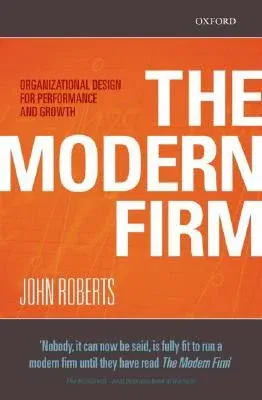Business firms around the world are experimenting with new
organizational designs, changing their formal architectures, their
routines and processes, and their corporate cultures as they seek to
improve their current performance and their growth prospects. In the
process they are changing the scope of their business operations,
redrawing their organization charts, redefining the allocation of
decision-making authority and responsibility, revamping the mechanisms
for motivating and rewarding people, reconsidering which activities to
conduct in-house and which to out-source, redesigning their information
systems, and seeking to alter the shared beliefs, values and norms that
their people hold.
In this book, John Roberts argues that there are predictable, necessary
relationships among these changes that will improve performance and
growth. The organizations that are successful will establish patterns of
fit among the elements of their organizational designs, their
competitive strategies and the external environment in which they
operate and will go about this in a holistic manner.
The Modern Firm develops powerful conceptual frameworks for analyzing
the interrelations between organizational design features, competitive
strategy and the business environment. Written in a non-technical
language, the book is nevertheless based on rigorous modeling and draws
on numerous examples from eighteenth century fur trading companies to
such modern firms such as BP and Nokia. Finally the book explores why
these developments are happening now, pointing to the increase in global
competition and changes in technology.
Written by one of the world's leading economists and experts that will
improve performance and growth. The organizations that are successful
will establish patterns of fit among the elements of their
organizational designs, their competitive strategies and the external
environment in which they operate and will go about this in a holistic
manner.

